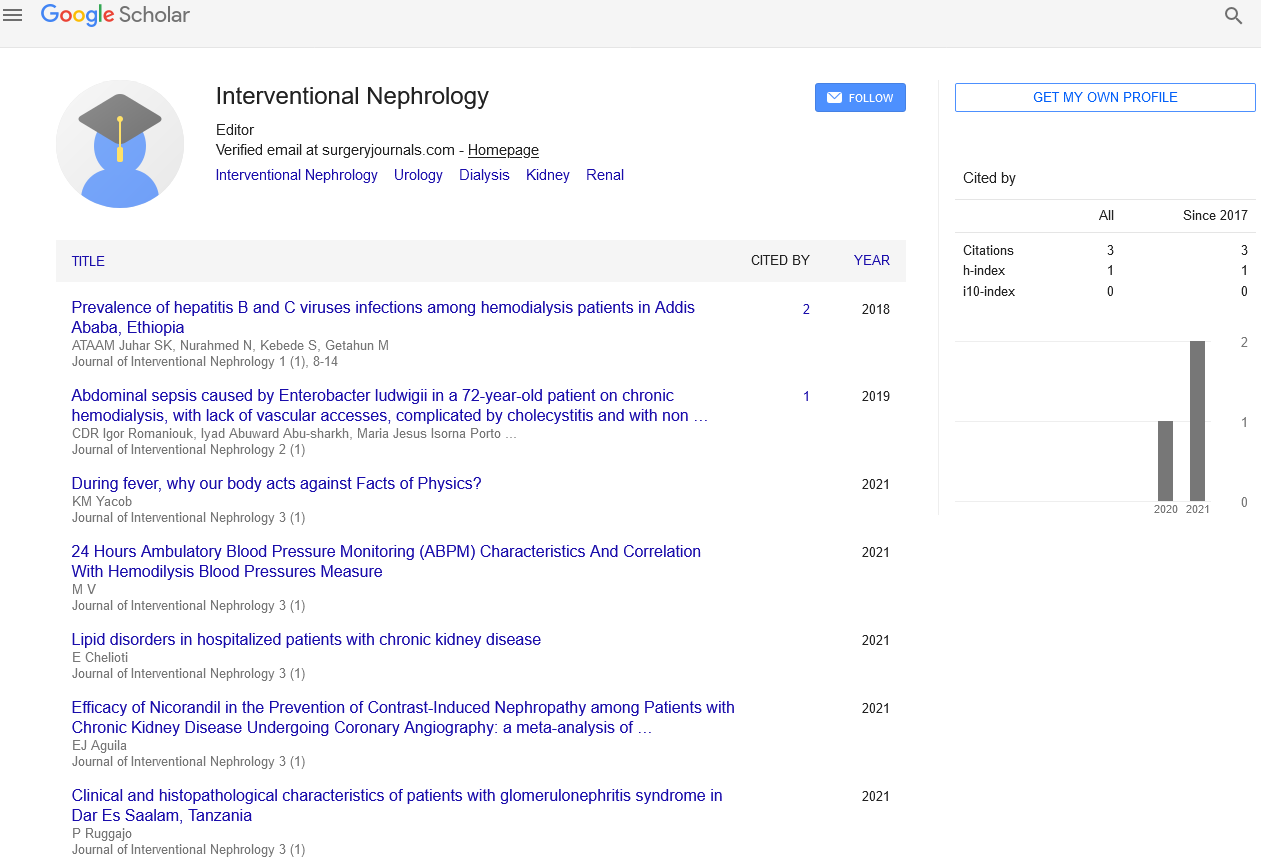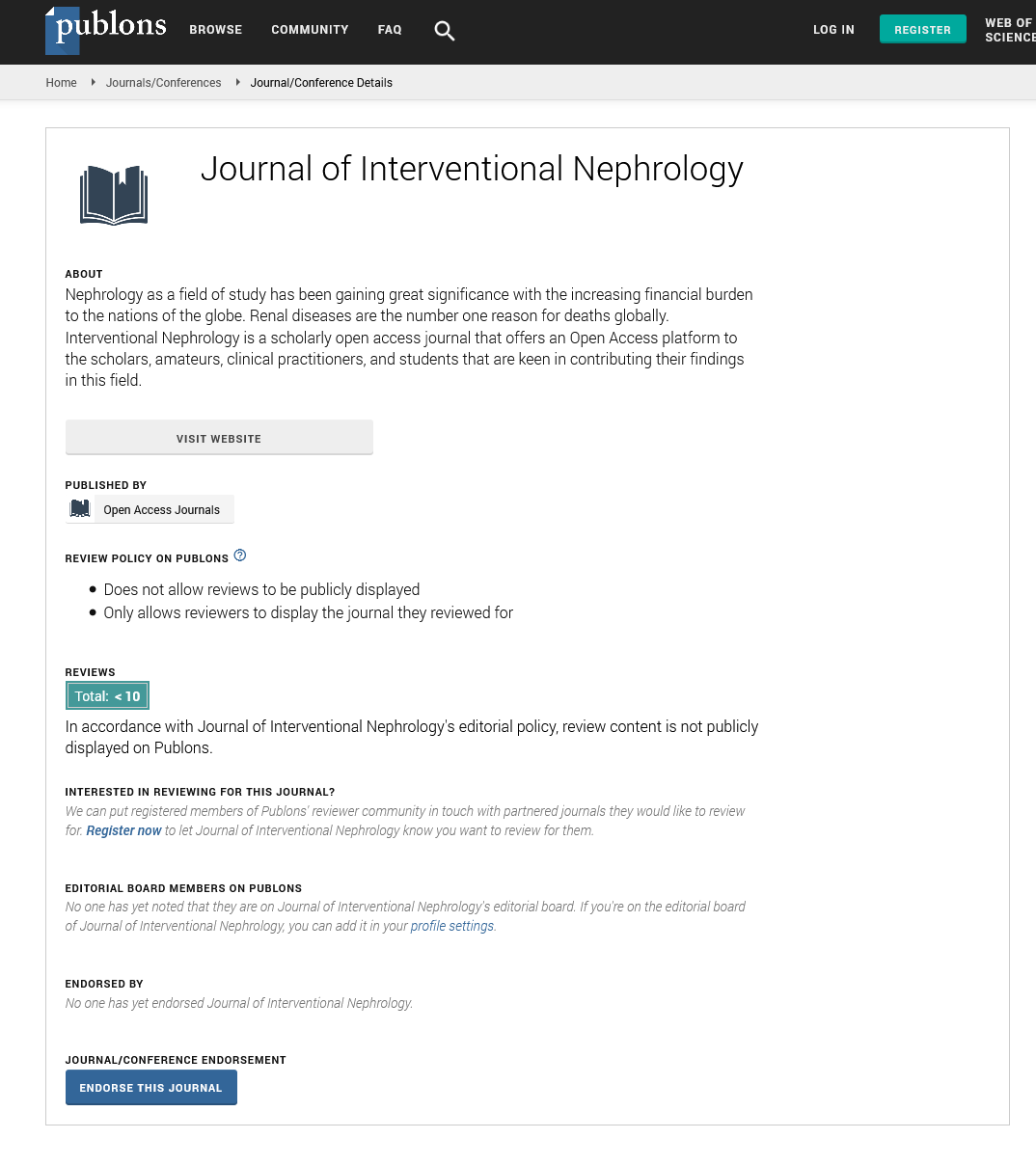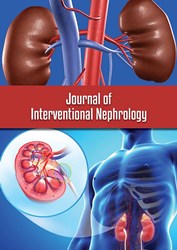Perspective - Journal of Interventional Nephrology (2024) Volume 7, Issue 4
Unraveling the Complexities of Renovascular Hypertension: Causes, Symptoms, Diagnosis, and Treatment
- Corresponding Author:
- Franz Saksena
Department of Nephrology, MVN University, Italy
E-mail: Franzs1234@edu.duc
Received: 20-May-2024, Manuscript No. OAIN-24-136448; Editor assigned: 22-May-2024, PreQC No. OAIN-24-136448 (PQ); Reviewed: 05-Jun-2024, QC No. OAIN-24-136448; Revised: 26-Jul-2024, Manuscript No. OAIN-24-136448 (R); Published: 05-Aug-2024, DOI: 10.47532/oain.2024.7(4).285-286
Introduction
Renovascular hypertension stands as a significant yet often underrecognized contributor to the global burden of cardiovascular disease. In this comprehensive article, we delve into the intricacies of renovascular hypertension, exploring its pathophysiology, clinical manifestations, diagnostic approaches, and therapeutic strategies to provide a deeper understanding of this complex condition.
Description
Understanding renovascular hypertension
Renovascular hypertension refers to high blood pressure caused by renal artery stenosis or obstruction, leading to impaired renal blood flow and activation of the Renin-Angiotensin-Aldosterone System (RAAS). The two primary etiologies of renovascular hypertension are Atherosclerotic Renal Artery Stenosis (ARAS) and Fibromuscular Dysplasia (FMD), though other less common causes, such as vasculitis or radiation-induced stenosis, may also contribute to the condition.
Pathophysiology
In ARAS, the narrowing of the renal artery lumen results from atherosclerotic plaque buildup, leading to reduced blood flow to the kidneys. This triggers a compensatory response, with the kidneys releasing renin, initiating the RAAS cascade, and ultimately resulting in increased systemic vascular resistance and elevated blood pressure. FMD, on the other hand, involves abnormal growth of the arterial wall, leading to segmental stenosis or aneurysmal dilation within the renal arteries, and subsequent hypertension.
Clinical manifestations
The clinical presentation of renovascular hypertension can vary widely, ranging from asymptomatic to severe and refractory hypertension. Common signs and symptoms may include:
• Elevated blood pressure, often resistant to
antihypertensive medications
• Fluctuations in blood pressure, particularly
with changes in posture or medication
regimens
• Headaches, dizziness, or visual disturbances
• Fatigue, weakness, or malaise
• Symptoms suggestive of secondary end-organ
damage, such as chest pain, dyspnea,
or lower extremity edema
• Renal manifestations, including worsening
renal function or recurrent episodes of flash
pulmonary edema (in cases of bilateral
renal artery stenosis)
Diagnostic evaluation
Diagnosing renovascular hypertension necessitates a comprehensive assessment, combining clinical evaluation, laboratory testing, and imaging studies. Key diagnostic modalities may include:
• Ambulatory Blood Pressure Monitoring
(ABPM) to assess for diurnal blood pressure
variations and evaluate the effectiveness of
antihypertensive therapy.
• Renal function tests, including serum
creatinine and estimated Glomerular
Filtration Rate (eGFR), to evaluate renal
function and assess for signs of chronic
kidney disease.
• Renal artery imaging, such as Doppler
ultrasound, Magnetic Resonance Angiography
(MRA), or Computed Tomography
Angiography (CTA), to visualize renal
artery anatomy and assess for stenosis or obstruction.
• Renin and aldosterone levels to evaluate
the activity of the RAAS and distinguish
between primary and secondary forms of
hypertension.
• Nuclear renal imaging (e.g., captopril
renography) to assess renal perfusion and
function in select cases.
Management strategies
The management of renovascular hypertension aims to control blood pressure, preserve renal function, and reduce the risk of cardiovascular complications. Treatment strategies may include:
• Lifestyle modifications, such as dietary
changes (e.g., sodium restriction), weight
management, regular exercise, and smoking
cessation, to optimize blood pressure control
and overall cardiovascular health.
• Pharmacological therapy, including
antihypertensive medications (e.g.,
angiotensin-converting enzyme inhibitors,
angiotensin receptor blockers, calcium
channel blockers) to lower blood pressure
and mitigate secondary end-organ damage.
• Revascularization procedures, such as
Percutaneous Transluminal Renal Angioplasty
(PTRA) with or without stent placement
or surgical revascularization, in cases of
significant or symptomatic renal artery
stenosis refractory to medical therapy.
• Close monitoring and surveillance to assess
blood pressure control, renal function, and
the progression of renovascular disease over
time.
Prognosis and complications
The prognosis of renovascular hypertension depends on several factors, including the underlying cause, severity of renal artery stenosis, and adequacy of blood pressure control and renal function preservation. While many individuals with renovascular hypertension respond favorably to treatment, untreated or poorly managed cases can lead to complications such as accelerated hypertension, myocardial infarction, stroke, or end-stage renal disease.
Future directions and research perspectives
Advancements in imaging technology, such as high-resolution MRA or novel molecular imaging agents, hold promise for improving the early detection and characterization of renovascular disease. Additionally, ongoing research efforts aimed at elucidating the underlying pathophysiology of renovascular hypertension and identifying novel therapeutic targets may pave the way for more effective treatment strategies and improved outcomes in the future.
Conclusion
Renovascular hypertension represents a complex and multifaceted condition characterized by renal artery stenosis or obstruction, leading to secondary hypertension and end-organ damage. Through a multidisciplinary approach encompassing early diagnosis, targeted therapy, and close follow-up, clinicians can effectively manage renovascular hypertension and mitigate the risk of cardiovascular complications, ultimately improving the long-term outcomes and quality of life for affected individuals.


